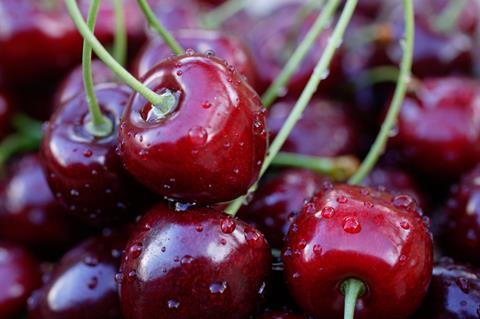
Cherries grown in Val Venosta and Trentino, areas of north-eastern Italy known better on the world stage for their apples, are poised to make a bigger impact on the international market thanks to the introduction of modern new methods of fruit harvesting and handling.
The new additions include hi-tech sorting and grading systems, as well as so-called hydrocoolers that cool the fruit to around 3-4°C in the orchard so that it can withstand the subsequent processes. These effectively enable the cold chain to start right from the moment the fruit leaves the tree.
In Val Venosta, this year’s crop is expected to be around 250-300 tonnes, about 40 per cent less than in 2015 but with a larger average size profile – something that is expected to offer improved commercial opportunities for growers.
Reinhard Ladurner is cherry sales manager at leading exporter VI.P. He says the group has improved its competitiveness by making significant changes to the way its member growers harvest their fruit.
“The new technology that we’ve introduced as part of our production system this year is speeding up the work done in the fields,” he explains, adding that pre-selection of cherries carried out at the point of harvesting will eliminate work traditionally done by VI.P’s packing partner Alpe.
New technology in Alpe’s packhouse, meanwhile, promises to improve the selection of high-quality cherries with the right colour and size.
Great minds think alike
VI.P is not the only export marketer looking to capitalise on strong demand for cherries by investing in better technology, both in the orchard and in the packhouse. Melinda, the Trentino-based consortium whose brand is synonymous with Italian apples, recently approved the building of a new packing facility for soft fruit and cherries beside an existing packhouse operated by Cocea, one of its members.
Costing an estimated €1m, the new site is equipped with technology including Italian firm Unitec’s Cherry Vision machinery, which measures internal and external quality, checking for size, colour, defects, density, sugar levels and the presence (or absence) of stalks.
Melinda’s Franco Paoli comments: “By eliminating the difficult part of the selection process, [the cherries] will arrive at the co-operative more quickly and will be graded and packed in record time; all of which will benefit the quality of the product that reaches the consumer.”
Across an area of around 30ha at an altitude of between 800m and 1,300m, Val Venosta’s cherry production consists mainly of two varieties, Regina and Kordia. While these varieties are popular especially on the domestic market, Ladurner says there is room for improvement in the way the fruit is sold and presented to the consumer.
“This year, we wanted to test ourselves by trying to make a big investment in technology that allows us to meet demand in the Italian market even better,” he reveals.
“To this end, we’ve introduced new pack sizes, adding 300g and 500g [punnets] to the existing 1kg so that we can offer more choice to the end consumer. Our aim, therefore, is to take preventative measures so that we can be better prepared and more competitive as demand rises further.”



